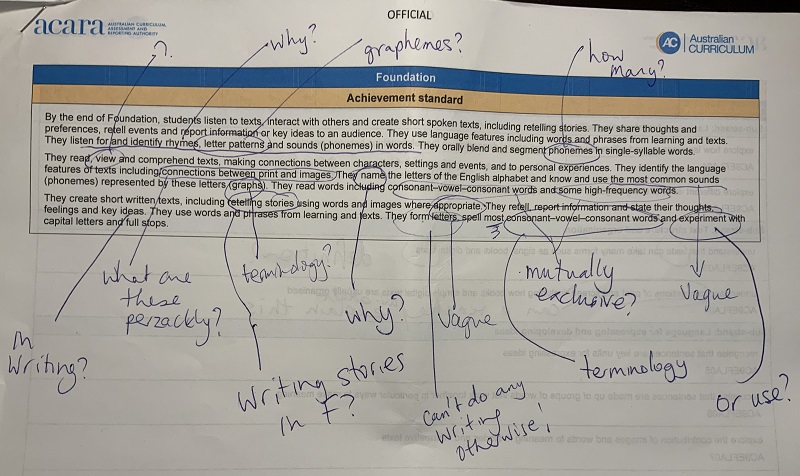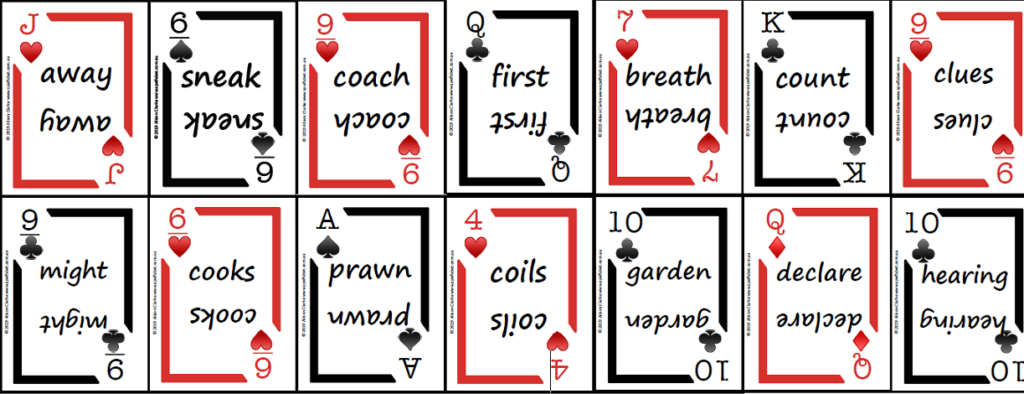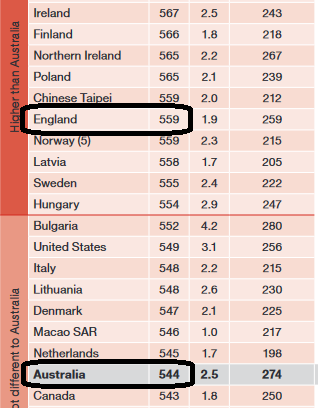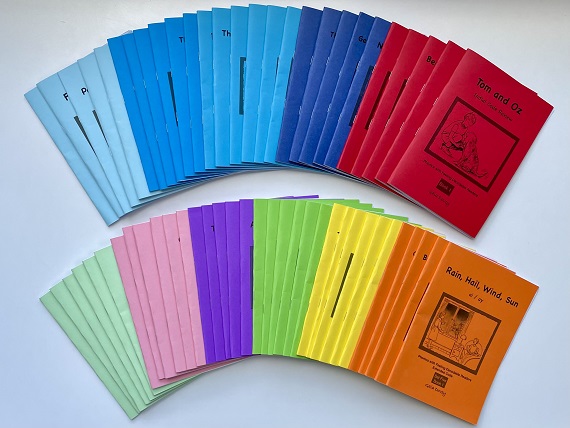Australian phonics screening and funding
0 Replies
I haven’t blogged for months because of a hard third COVID-and-flu-cancellations winter, staff changes (we still need another speech pathologist to help with the crazy waiting list, click here for the job ad), a complete website rewrite, and a death in the family. Sigh.
However, many blog-worthy things have kept happening in the science of reading/spelling world. Did you see any of the incredible, free, online PATTAN 2022 Literacy Symposium presentations? Do you know about LDA‘s seminars by US phonemic awareness guru Linnea Ehri and an explosion of local talent in Melbourne on 23 October, and Sydney on the 25th? Tickets are here (but may be close to sold out). I’m pinching myself to have the honour of MCing the Melbourne seminar.
A couple of recent local announcements prompted an excellent blog from Pam Snow, which you can read here, and I’ve been thinking about them too.
Victorian Phonics Screening Check
In 2023, all Year 1 students in my state will do a phonics screening test, to check they’re learning to sound out words, not just memorise and guess them. Excellent.
Many schools still actively encourage guessing and memorising by using predictable texts, multicueing/three-cueing/MSV strategies, and rote-learning of high frequency word lists, and assess early literacy with Running Records.
A Running Record is a bit like assessing a car by walking around it kicking the tyres. Smart kids with weak decoding can appear to be reading. Phonics screening is like lifting the bonnet and checking there’s actually an engine, and the previous driver wasn’t just doing a Fred Flintstone.
There is a federally-funded Literacy Hub Phonics Screening Check, but Victoria’s Phonics Screening Check will consist of items added to the existing English Online Interview. Only employees of the Victorian Education Department can access this, so I can’t tell you much about it. Victoria’s phonics test was piloted earlier in the year, so I hope valid and reliable test items were identified to add to English Online.
Are the skills to be tested in the curriculum?
Victoria’s Year 1 phonics test will be administered in weeks 3-7 of Term 1, so children will have little more than Foundation (first year of schooling) knowledge of phonics. The two Foundation Reading and Viewing Phonics and Word Knowledge standards in the Victorian Curriculum set a very low standard:
- Recognise all upper- and lower-case letters and the most common sound that each letter represents (VCELA146)
- Blend sounds associated with letters when reading consonant-vowel-consonant words (VCELA147)
Taken at face value, these might restrict the Victorian Year 1 phonics screening test’s words to CVCs with spellings like ‘run’, ‘hop’ and ‘fig’, and pseudowords like ‘nim’, ‘wep’ and ‘vab’. Most children who’ve been taught well in Foundation can read much longer/harder words than that.
I hope the process of formulating and using this test, and adapting the state curriculum to the new, taking-phonics-more-seriously Australian curriculum, will prompt our Education Department to spell out which phoneme-grapheme correspondences and morphemes are expected to be learnt, at least in each of the first three years of schooling.
For example, will early Year 1 students be expected to read words with up to five sounds e.g. ‘crust’ and ‘spend’? Words with consonant digraphs like ‘sh’, ‘ch’ and ‘th’? Any vowel digraphs? What about inflectional morphemes like jump-jumps-jumped-jumping, or soft-softer-softest, and compound words? At the moment, this is unclear.
Phonics screening elsewhere
After a long push for more emphasis on early phonics in the UK, the Year 1 Phonics Screening Check was first done across England in 2012. Past versions of UK phonics screening tests are freely available online, here are links to the 2022, 2019 and 2018 versions (2020 and 2021 tests were didn’t happen because of the COVID-19 pandemic).
A 2018 National Foundation for Educational Research report said of the UK’s 2016 Progress in Reading Literacy (PIRLS) data for Year 4 students, “The average reading score of students in England was significantly higher than in PIRLS 2006 and 2011, and higher than the majority of other countries.” As you can see from the screenshot of the p5 table of an ACER report on PIRLS 2016 here, English children achieved a Mean score of 559, significantly higher than Australia’s 544. Their extra emphasis on assessing and teaching phonics hasn’t done them any harm.
Two Australian states already screen Year 1 children’s decoding skills. South Australia ran a trial in 2017, then rolled a test out to government schools in 2018, and other schools in 2019. New South Wales had a pilot in 2020 and rollout in 2021. Both tests only seem to be accessible to education department staff, but seem similar to the UK test.
In SA in 2021, 67% of children got the expected 28 out of 40 test words/pseudowords correct. In 2018 only 43% of children got 28 items right. Last year, only 2% of kids couldn’t read any words, down from 4% in 2018. Rural, indigenous and lower socioeconomic kids tended to score below average, more details are here.
In NSW in 2021, 56.7% of students were at or above the expected achievement level, up from 43.3% in the 2020 trial. More details are here. I hope we see a similar early lift in skills in Victoria, and that extra attention and resources for rural, indigenous and disadvantaged kids bring their results closer to average.
Administering and following up the test
Australian Year 1 teachers have been given a couple of days and some training to administer the Year 1 Phonics Check, which is a good start, but more needs to be done to help them make optimal use of the test’s data. Gaps in teachers’ knowledge of scientific approaches to teaching early reading and spelling are now being filled by teachers themselves, in droves, in their own time if necessary. They’re voting with their feet for evidence-based practice, and demanding teaching resources to match. Universities, education departments and publishers should take note, and catch up.
We have a state election at the end of November, and the state Opposition has just promised $220 million for systematic, synthetic phonics training and resources. The downstream benefits of preventing reading failure with such measures are massive, for education, employment, the justice system, health and mental health, you name it.
This election promise is most welcome, and in the context of a ~$90 billion (with a b) state budget, I hope all parties contesting the election will match it. After all, this is The Education State, and all children deserve best educational practice.
The Australian Curriculum Version 9.0
29 Replies
Prompted by an interesting Radio National interview with ACARA CEO David de Carvalho, I’ve been trying to get my head around early literacy in version 9.0 of the Australian Curriculum. It’s a definite improvement on previous versions, so WELL DONE to all those who argued for evidence-based practice, sorry I was too busy swimming through COVID-related mud to help.
My main interest is in the English strand for Foundation to Year 2, the vital learning-to-spell-and-decode years. Have predictable texts, multicueing and rote-memorisation of high-frequency wordlists finally been dumped? How specific is it about which phonemic awareness, phonics and morphology knowledge/skills to teach in the first three years? What does it say about spelling?
(more…)The Education Research Reading Room podcast
2 Replies
I’ve just been listening to the latest episode of Ollie Lovell’s Education Research Reading Room (ERRR) podcast, the back catalogue of which is such a magnificent, free professional learning resource for teachers and others in education.
Ollie is a maths/science teacher and researcher here in Melbourne, but he’s brimming with curiosity and enthusiasm about education more generally, and always finds interesting people to interview, and asks them interesting questions.
(more…)Phonics With Feeling Set 10 now available
1 Replies
I’ve just put six brand new Set 10 Phonics With Feeling printable decodable readers into the Spelfabet website shop. Like all these books, they cost 40c per print to make 5 copies, or 20c per print to make 30 copies. You provide the paper/card, printer and assembly time, which of course adds to the real cost, but if you’re short of funds, these are a very affordable way to boost your library of decodable text.
(more…)What sounds did you SAY (not just hear) in that word?
0 Replies
If you haven’t listened to the US Reading League’s podcast with Dr Jeannine Herron, or watched it on YouTube, I highly recommend it. She’s an inspiration, the perfect tonic if you’re feeling a bit wearied by swimming-through-COVID-mud, as I am.
At 84, she has a wonderful laugh, rogue chickens, and is planning to write a new program, not resting on her life’s laurels as a teacher, activist, research scientist, adventurer, writer, editor, and a program and software developer.
(more…)New printable decodable books, including an extra free one
2 RepliesTo celebrate the removal of predictable texts and multicueing from the Australian National Curriculum (yippee!), more Phonics with Feeling printable decodable books are now available from the Spelfabet website.
These provide an affordable way to help Year 1 and 2 students, advanced Foundation students, and slightly older strugglers to build decoding skills. They are longer than most decodable books, allowing for cohesive narratives, entertaining plots, engaging characters, and themes worth talking about.
(more…)New 2 ways to spell vowels cards, including a free deck
0 Replies
Some students need smaller-than-average steps and extra practice to get spelling patterns into long-term memory. Games are a great, nag-free way to get in lots of targeted, extra repetitions.
The newest set of download-and-print Spelfabet phonics playing cards has 14 decks, each with one vowel sound spelt two ways, and includes a free sample deck:
(more…)



